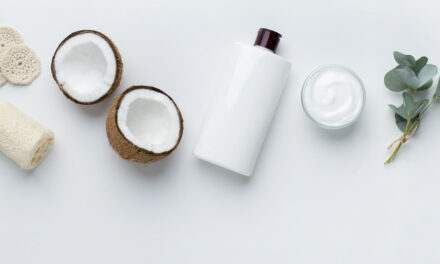
If you care about the health of your hair and scalp, a diy ayurvedic shampoo is a comprehensive hair wash solution you should consider. Shampoo plays a key role in the health of your hair and scalp and, as such, can make or break your efforts in hair growth, healthy hair, scalp, etc.
So, what do you do? Take control of your hair and scalp health back in your hands and prepare your own hair wash products and other hair care products you use. This is a herbal shampoo or a DIY Ayurvedic shampoo recipe you can try without much ado.
Benefits of Using Ayurvedic Shampoo
There are many benefits to using Ayurvedic shampoo for your hair and scalp care. Let’s take a look at the benefits it offers.
A natural cleanser that’s mild and gentle on your hair and scalp as compared to commercial hair products or shampoos.
It also conditions and maintains’s scalp’s pH levels.
Ensures a healthy scalp and promotes hair growth.
It curbs hair loss and stimulates hair follicles.
Antibacterial and antifungal properties keep scalp issues at bay.
Anti-inflammatory properties soothe and calm irritated or inflamed scalps.
It improves hair texture, curbs oily hair, prevents dry hair, strengthens the hair shaft, stimulates blood circulation to the scalp, and leaves your hair shiny and soft.
Understanding Hair Types and Concerns

Just like your skin, there are different scalp types. The scalp is an extension of your skin, and your skin type and scalp type are the same. Having said that, there are hair types too. The texture and type of hair to start with are key considerations when you’re choosing hair care products.
Natural hair can be curly, dry, straight, or wavy, and then there’s chemically or heat-altered hair like permed or relaxed hair, straightened hair, colored hair, etc. Every natural hair type is then further classified as type A to D, depending on a few traits.
Essential Ingredients for Ayurvedic Shampoo
This DIY Ayurvedic shampoo recipe is very versatile and can be modified and tweaked according to one’s preference and requirements. Both wet and dry versions of this DIY herbal shampoo can be prepared, and the ingredients don’t change much for both.
The essential ingredients are the base and the key herbs though there are numerous options and variations with the ingredients to choose from. However, the base of the recipe is usually soap nuts and shikakai are base. Some recipes skip soap nuts and add Albizia Amara leaves powder. It is also added with soap nuts. Albizia leaves don’t foam much, so soap nuts are added, as some prefer the lather.
The other ingredients included are herbs like false daisy leaves, margosa leaves, hibiscus flowers and leaves, water hyssop leaves, dwarf copperleaf, rose petals, Indian gooseberry, lemon peel, henna leaves, fenugreek seeds and leaves, sandalwood powder, green gram powder, etc.
DIY Ayurvedic Shampoo Recipe
You can prepare a powdered or liquid version of this DIY Ayurvedic shampoo. Here we’re going with the liquid version and will also add instructions for the powdered version. You can choose what works best for you.
The best part about this DIY ayurvedic shampoo recipe is that it’s easy, natural, and very effective for comprehensive hair and scalp care.
Ingredients
Soap Nuts – 100 Grams
Shikakai or Hair Fruit – 100 Grams
Albizia Leaves – 10 Grams
False Daisy Leaves – 10 Grams
Dwarf Copperleaf – 10 Grams
Margosa Leaves – 10 Grams
Hibiscus Leaves & Flowers – 10 Grams
Fenugreek Seeds – 1 Tbsp.
Indian Gooseberry – 10 Grams
Aloe Vera Gel – 1 Tbsp.
Rose Petals – 10 Grams
Step-By-Step Preparation Instructions
Soak the soap nuts, shikakai, and gooseberries in water overnight.
The next morning, the water should be foamy.
Heat this water till it is boiling and simmer it.
Add in all the herbal ingredients and mix to ensure they’re well-soaked.
Let it steep for a few minutes, then cover it with a lid and let it steep while cooling down.
Once it fully cools down, filter the liquid into a shampoo dispenser.
Add in the aloe gel and shake gently.
It’s ready for use.
Herbal Infusions for the Shampoo
To prepare the herbal infusion, you can either let it heat up and simmer for a few minutes or let it steep.
Method 1: Add all the herbs listed above to boiling water and simmer for a few minutes. Switch off the heat and cover it with a lid till it cools down fully. Let it sit for 3 – 4 hours at least before filtering.
Method 2: Heat up the water you’re going to use for infusion. When it is boiling, remove it from the heat. On the other hand, get the herbs ready while the water is heating. Pour all the herbs chosen into a heat-proof jar or heavy vessel. Pour the boiling water over the herbs and keep it covered for 3 – 4 hours. Your herbal infusion is ready.
Notes
To prepare a powdered version of this recipe, you just have to grind all the ingredients to a fine powder and use it. You can make the paste when you want to apply it using water, rose hydrosol, coconut milk or water, yogurt, rice water, or aloe juice.
You can also use lavender buds in this recipe instead or along with rose petals. The lavender aroma is soothing and relaxing.
You can also add a dash of sweet almond oil to this diy ayurvedic shampoo, especially if you have dry hair or scalp issues.
Incorporating Essential Oils for Fragrance and Added Benefits

Though this is a herbal shampoo, the quantity of herbs you can add is limited, and they’re not concentrated sources of nourishment. On the other hand, essential oils are concentrated natural extracts that offer numerous benefits, including adding a nice aroma to the shampoo. You can consider using them in your recipe. If you’re using essential oils, add them after filtering the shampoo to a dispenser and shake gently to combine.
Application and Usage
This shampoo can be runnier than you’re used to but don’t think the efficacy or cleansing will reduce. Just try taking your normal shampoo quantity and applying it to your scalp.
Massage gently, working your way through your scalp, and apply the rest of your hair all the way to the tips. Wait for a couple of minutes.
Massage once more and rinse off thoroughly.
Finish off with a rice water rinse.
Air dry and style as usual.
Precautions and Potential Side Effects
This shampoo is slightly cooling.
If you’re using the powdered form, make sure not to inhale it, as it can irritate your lungs. This is particularly an issue for those with lung-related issues. You can either use the liquid form in this recipe or, for powdered form, skip shikakai and substitute with Albizia Leaves.
If you’re using powdered form, use rice water, rose water, or yogurt to prevent dryness and frizz.
Storing and Shelf Life
The powdered form lasts well on the shelf for months.
The liquid form we’ve prepared should be refrigerated for the best results. Since we’re using water and no preservatives, it can lead to microbial infestation. You can store the shampoo for a couple of months, as preparing a fresher batch every few months is ideal.
Final Tips for Achieving Healthy and Lustrous Hair Through Ayurveda
Use diy Ayurvedic shampoo where you can, and when you don’t have time, get herbal hair wash powder or Ayurvedic shampoo at herbal stores and use it for cleansing your scalp and hair.
Not just a herbal shampoo or a DIY Ayurvedic shampoo, prepare your own hair care products when you can, or buy natural and organic products for hair care.
Use hair oils regularly to promote healthy hair growth.
A hair mask once or twice a month stimulates hair growth, makes hair smooth, nourishes and strengthens hair, improves hair texture, and more.
Always ensure pH balance to keep the scalp healthy.
Conclusion
Like every other recipe, make your own tweaks and changes to this diy Ayurvedic shampoo recipe. This way, the DIY Ayurvedic shampoo recipe will be more suited to your requirements and preferences.
However, if you don’t want to go the DIY way, we’ve got you covered with a range of vegan hair cosmetics from Vitamins Revive. Do check out their store when you have a moment.
As always, feel free to write to us with any questions, concerns, or requests. We love hearing from you. Do let us know how you liked the recipe and how it worked for you.









